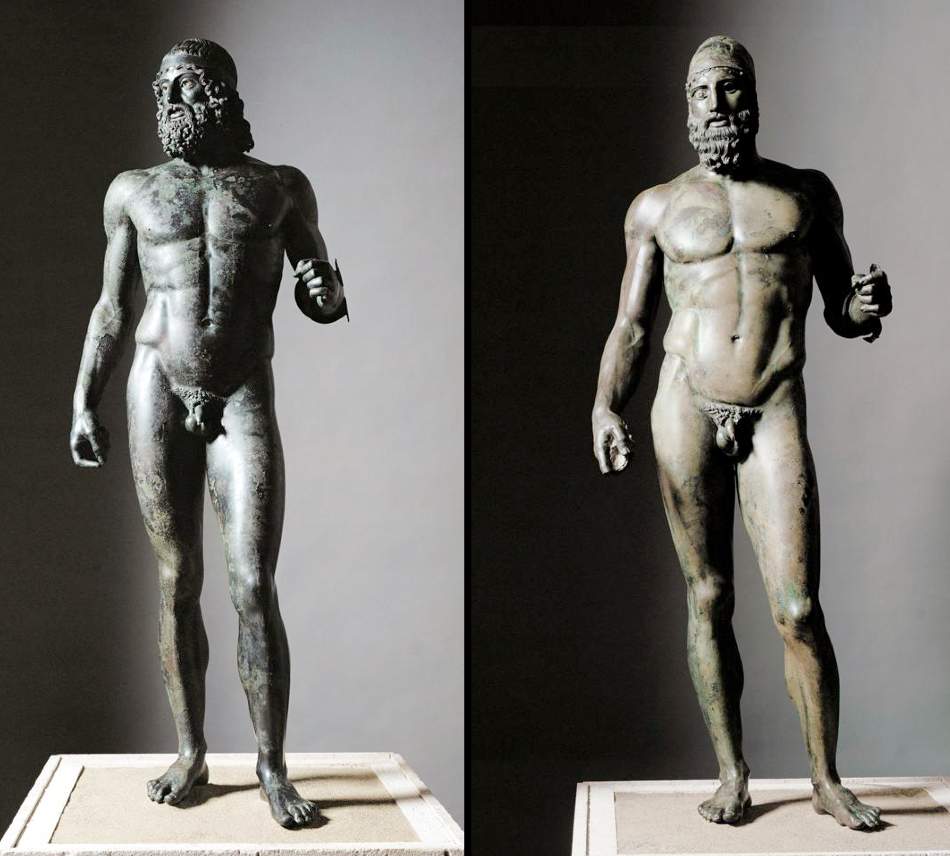The TV program Le Iene, with a report by journalist Antonino Monteleone aired in the Thursday, Oct. 3 episode, reopened the case of the so-called “third Riace bronze.” The affair concerns the Riace bronzes, the two celebrated Greek bronzes, dated to the fifth century B.C., and found in 1972 off the coast of Riace, Calabria, in the depths of the Ionian Sea (today as is well known they are kept at the National Archaeological Museum in Reggio Calabria). The Iene report (which can be found on Mediaset’s website at this address) focuses in particular on two aspects: the authorship of the discovery and the possibility that some of the finds were stolen. These are not new events, but they have not been told through a national television until now.
On the first point, the official version of the discovery of the Riace bronzes attributes the discovery to the Roman diver Stefano Mariottini, who saw the statues on the seabed on August 16, 1972, and the next day filed a complaint with the Reggio Calabria Superintendent’s Office (the superintendent at the time was Giuseppe Foti). Monteleone, however, reconstructed another possible version: authors of the discovery could have been four boys, who were then between 12 and 16 years old(Giuseppe Sgrò, Domenico Campagna and the two brothers Cosimo and Antonio Alì) and who would have found the statues before Mariottini, who, according to them (interviews with the four were broadcast), would have credited himself, claiming that the boys would have arrived at the site of the discovery only after him (Sgrò and friends, however, claim the exact opposite). For his discovery, Mariottini also received a prize of 125 million liras from the state, a point on which Sgrò, interviewed by Monteleone, was very harsh: “it turned out that Mariottini screwed himself out of the money.” The four also tried to make their case in court but, as Monteleone recalled during the broadcast, the judge agreed with Mariottini.
The second point, however, concerns the possibility that some of the artifacts found together with the two statues today in Reggio Calabria were stolen. Monteleone interviewed Giuseppe Braghò, author of a book on the affair, who recalled how the complaint filed by Mariottini also described the presence of a shield, a helmet, and a statue with outstretched arms, and that it spoke not of two statues but of “a group of statues.” according to Braghò it is a sign that not all the works found today are part of public collections, and again according to Braghò there is a possibility that several finds (including perhaps a complete statue) were stolen. Monteleone then went to Mariottini to interview him on these issues, but the Roman diver would not answer the reporter’s questions (and an attack on Monteleone by some people who were with Mariottini also ensued). The report concludes with an appeal by Monteleone that the affair should not be overshadowed and that the truth of what happened in 1972 can be reconstructed.
In the photo: the Riace bronzes
 |
| Le Iene reopens the case of the third Riace bronze: were artifacts stolen from the waters of the Ionian Sea? |
Warning: the translation into English of the original Italian article was created using automatic tools. We undertake to review all articles, but we do not guarantee the total absence of inaccuracies in the translation due to the program. You can find the original by clicking on the ITA button. If you find any mistake,please contact us.